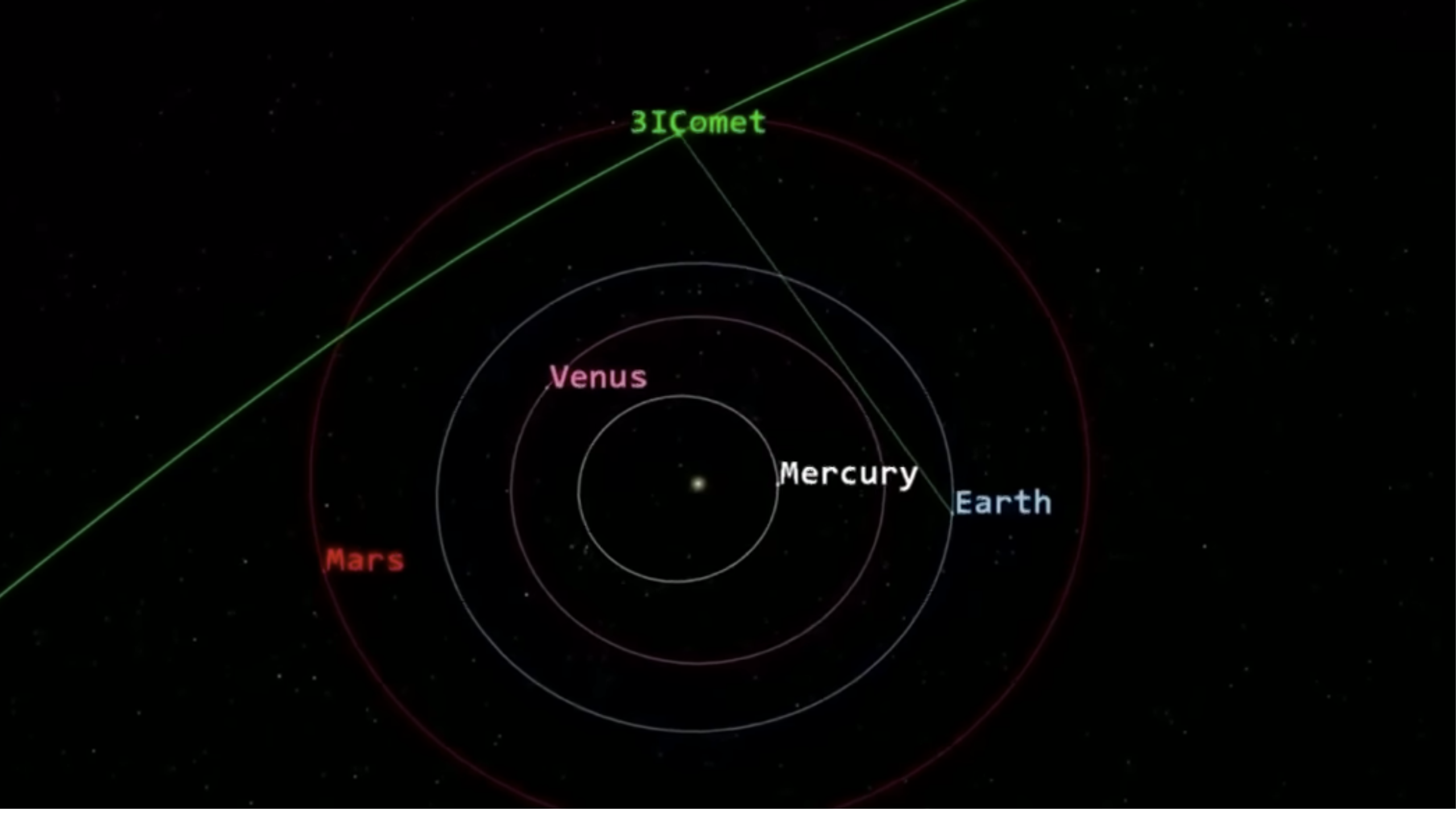Science
NASA Scientists Explore Origins of 3I/ATLAS, a Fast-Moving Visitor

A mysterious object known as 3I/ATLAS has entered our solar system, igniting discussions among scientists and the public alike about its origins and speed. This celestial body is moving at an extraordinary velocity of 58 km/s (approximately 36 miles/s) relative to the Sun, prompting speculation about its nature. Some claim that its rapid pace cannot be attributed to natural forces, leading to theories of possible artificial origins. However, the scientific consensus suggests that this object’s characteristics align with those of ancient interstellar visitors and do not imply any technological involvement.
Understanding 3I/ATLAS’s Speed and Trajectory
For most astronomers, the speed of 3I/ATLAS is not an anomaly but rather a defining feature of its interstellar journey. The object is following an extremely hyperbolic trajectory, which is a clear indicator of its origins outside our solar system. Gravitationally bound objects, such as planets and comets, exhibit closed elliptical orbits. In contrast, 3I/ATLAS has an orbital eccentricity of 6.2, far exceeding the 1.0 threshold that distinguishes interstellar objects.
As it approaches the Sun, 3I/ATLAS is predicted to accelerate even further before being propelled back into the depths of space. This pattern confirms that it is not, and has never been, affected by the Sun’s gravitational pull. The consensus among scientists is clear: natural phenomena explain its observed behavior, including any tail or glow, which can be attributed to perspective rather than propulsion.
Ancient Origins and Cosmic Journey
The prevailing theory suggests that 3I/ATLAS is a comet, likely ejected from its own star system billions of years ago. This ejection could have resulted from a close encounter with a massive planet or another star, leading to its solitary journey through the cold of interstellar space. Some analyses indicate that 3I/ATLAS may be between 7.6 billion and 14 billion years old, making it possibly older than our own solar system.
Its age and trajectory imply that it may belong to the galactic thick disk, a collection of ancient stars characterized by lower heavy-element content compared to our Sun. This connection further reinforces the idea that 3I/ATLAS serves as a messenger from an ancient star system, offering scientists a glimpse into the primordial galaxy.
While some, including Avi Loeb from Harvard University, propose that 3I/ATLAS could represent an advanced alien technology, the majority of the scientific community maintains that natural explanations must be prioritized before considering extraordinary claims. Loeb has suggested the possibility of a glowing solar shield or other technological indicators, but these theories remain on the fringe of scientific acceptance.
In conclusion, while the speed of 3I/ATLAS exceeds the typical velocities of solar system bodies, it represents a natural and expected trait of an interstellar object rather than evidence of alien technology. As research continues, the journey of 3I/ATLAS serves as a profound reminder that scientific inquiry can often reveal more extraordinary truths than mere speculation. With more interstellar objects being discovered, scientists are eager to learn what other cosmic secrets they may hold.
As the investigation into 3I/ATLAS progresses, the scientific community is poised to uncover more about the universe’s history and the origins of these ancient travelers. The quest for knowledge continues, and with it, the promise of understanding our place within the cosmos.
-

 Health3 months ago
Health3 months agoNeurologist Warns Excessive Use of Supplements Can Harm Brain
-

 Health3 months ago
Health3 months agoFiona Phillips’ Husband Shares Heartfelt Update on Her Alzheimer’s Journey
-

 Science2 months ago
Science2 months agoBrian Cox Addresses Claims of Alien Probe in 3I/ATLAS Discovery
-

 Science2 months ago
Science2 months agoNASA Investigates Unusual Comet 3I/ATLAS; New Findings Emerge
-

 Science2 months ago
Science2 months agoScientists Examine 3I/ATLAS: Alien Artifact or Cosmic Oddity?
-

 Entertainment2 months ago
Entertainment2 months agoLewis Cope Addresses Accusations of Dance Training Advantage
-

 Entertainment5 months ago
Entertainment5 months agoKerry Katona Discusses Future Baby Plans and Brian McFadden’s Wedding
-

 Science1 month ago
Science1 month agoNASA Investigates Speedy Object 3I/ATLAS, Sparking Speculation
-

 Entertainment4 months ago
Entertainment4 months agoEmmerdale Faces Tension as Dylan and April’s Lives Hang in the Balance
-

 World3 months ago
World3 months agoCole Palmer’s Cryptic Message to Kobbie Mainoo Following Loan Talks
-

 Entertainment4 months ago
Entertainment4 months agoMajor Cast Changes at Coronation Street: Exits and Returns in 2025
-

 Entertainment5 months ago
Entertainment5 months agoLove Island Star Toni Laite’s Mother Expresses Disappointment Over Coupling Decision









